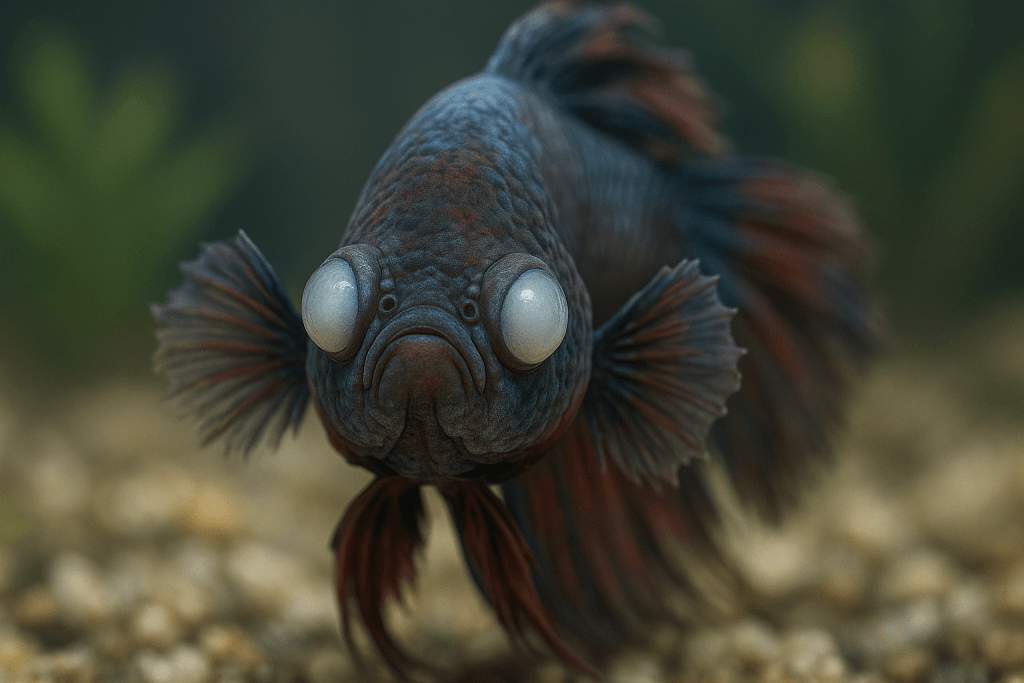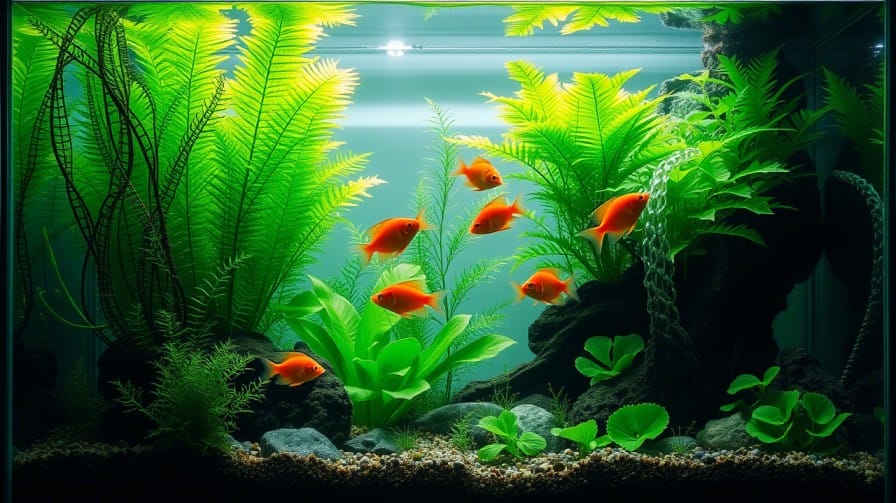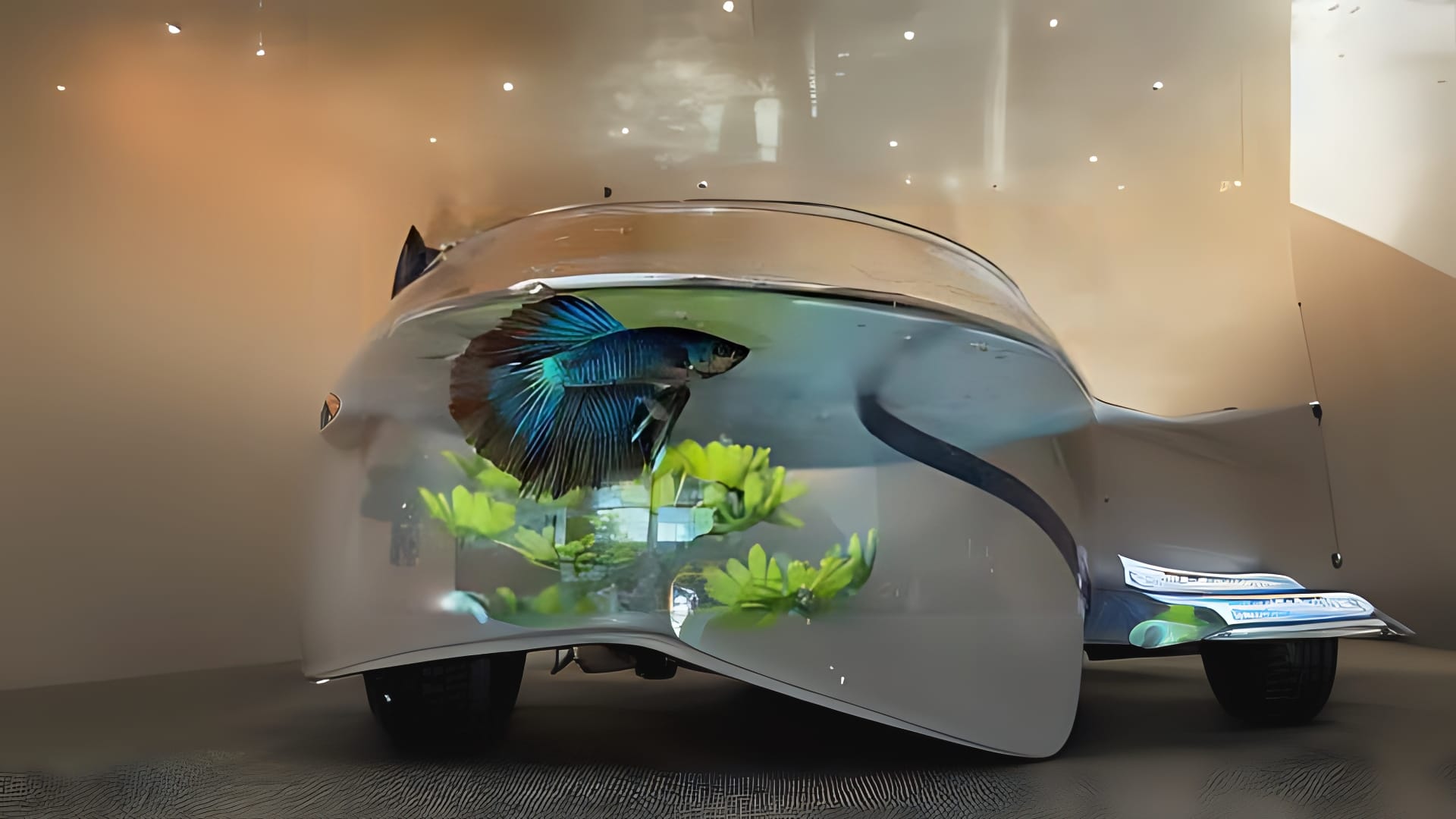
Cloudy eyes in fish can be alarming for aquarium owners, but with the right approach, this condition is often treatable. This guide explains what cloudy eyes are, their causes, and treat cloudy eyes in fish effectively, whether you’re a beginner or an experienced fish keeper. We’ll also cover prevention tips and answer common questions to help you keep your fish healthy.
Why Do Fish Get Cloudy Eyes?
Cloudy eye is a condition where a fish’s eye becomes hazy, opaque, or covered with a grayish-white film, potentially leading to vision loss. It’s not a disease itself but a symptom of underlying issues. Research suggests the most common causes include:
- Poor Water Quality: High levels of ammonia, nitrite, nitrate, or improper pH stress fish, leading to health issues like cloudy eyes.
- Physical Trauma: Injuries from sharp tank decor, rough substrates, or aggressive tank mates can damage the eye, causing cloudiness, especially in fish with protruding eyes like bettas or goldfish.
- Infections: Bacterial, fungal, or parasitic infections often develop secondary to stress or injury. Common pathogens include Aeromonas bacteria, Saprolegnia fungi, or flukes.
- Nutritional Deficiencies: Lack of vitamins, particularly vitamin A, can impair eye health.
- Cataracts: Common in older fish, cataracts cause permanent cloudiness with no known treatment.
- Cancer: Rare, but possible in pond fish exposed to UV or heavy metals, leading to cloudy eyes.
Understanding these causes helps tailor the treatment approach.
Step-by-Step: How to Treat Cloudy Eyes in Fish
Treating cloudy eyes requires identifying and addressing the root cause. Follow these steps for effective treatment:
- Check and Improve Water Quality
- Test Parameters: Use a reliable aquarium test kit to measure ammonia (should be 0), nitrite (0), nitrate (low, ideally <20 ppm), pH, and temperature. Each fish species has specific requirements (e.g., bettas prefer pH 6.5-7.5).
- Perform Water Changes: If parameters are off, do a 25-50% water change with dechlorinated water at the same temperature as the tank. Use a water conditioner to neutralize chlorine and chloramine.
- Maintain Stability: Avoid sudden changes in temperature or pH to prevent further stress.
- Inspect the Tank and Fish
- Remove Hazards: Check for sharp decorations, rough substrates, or overcrowded conditions that could injure fish. Replace with smooth or soft items, like fabric plants for bettas.
- Address Aggression: Observe for bullying or fighting. Separate aggressive fish to a different tank if necessary.
- Examine the Fish: Look for physical signs of injury, such as scratches or swelling around the eye.
- Observe for Infection Symptoms
- Behavioral Signs: Lethargy, loss of appetite, isolation, or abnormal swimming may indicate an infection.
- Quarantine if Needed: If infection is suspected, move the affected fish to a quarantine tank to prevent spreading pathogens to others.
- Administer Appropriate Treatments
- Bacterial Infections: Use broad-spectrum antibiotics like Kanamycin, Erythromycin, or API Melafix, following package instructions. Remove activated carbon from filters during treatment to avoid absorbing medication.
- Fungal Infections: Apply antifungal treatments like Sera Mycopur or Methylene Blue. These are effective against fungi like Saprolegnia.
- Parasitic Infections: Use antiparasitic medications such as eSha 2000 or Copper sulfate, but use cautiously as they can be harsh on sensitive fish.
- Epsom Salt Baths: For mild cases or swelling, try a short Epsom salt bath (1 tablespoon per 5 gallons for 10-15 minutes) to reduce inflammation.
- Enhance Diet
- Offer a varied diet including high-quality pellets, frozen foods (e.g., brine shrimp), and vitamin-rich options like spinach for herbivorous fish. This addresses potential deficiencies, especially in vitamin A (Chewy).
- Monitor Progress
- Observe the fish daily for improvement. Cloudiness may clear within a few days with proper care.
- If no progress occurs after 5-7 days or symptoms worsen, consult an aquatic veterinarian for a precise diagnosis (Fish Vet).
Read More: how do i know if my fish has a parasite
Common Causes of Cloudy Eyes in Fish
| Cause | Description | Prevention |
|---|---|---|
| Poor Water Quality | High ammonia, nitrite, nitrate, or improper pH stress fish | Regular testing, water changes, use water conditioners |
| Physical Injury | Scratches from decor or fights, common in protruding-eyed fish | Smooth tank decor, soft substrates, monitor tank mates |
| Infections | Bacterial, fungal, or parasitic, often secondary to stress | Stable water conditions, quarantine new fish |
| Nutritional Deficiencies | Lack of vitamin A or poor diet | Varied, high-quality diet with vitamin-rich foods |
| Cataracts | Age-related, permanent cloudiness | No prevention; focus on overall health |
| Cancer | Rare, linked to UV or heavy metal exposure in ponds | Minimize environmental toxins, regular pond maintenance |
Home Remedies vs. Medications
For mild cases, home remedies may suffice, but infections often require medications. Here’s a comparison:
Treatment Options for Cloudy Eye
| Method | When to Use | Pros | Cons |
|---|---|---|---|
| Water Change | First sign of cloudiness | Safe, immediate improvement | May not cure infections |
| Epsom Salt Bath | Mild cases or swelling | Natural, reduces swelling | Ineffective for severe infections |
| Antibiotics | Confirmed bacterial infection | Fast, targeted recovery | Needs correct diagnosis, possible side effects |
| Antifungal | Suspected fungal infection | Effective against fungi | May not address other causes |
| Antiparasitic | Suspected parasitic infection | Targets parasites | Harsh on sensitive fish |
- Home Remedies: Regular water changes and Epsom salt baths are safe starting points. They work well for water quality issues or minor trauma but may not address infections.
- Medications: Antibiotics, antifungals, or antiparasitics are necessary for infections but require careful use to avoid harming fish or disrupting tank balance. Always follow dosage instructions and consult a vet if unsure (Texas Aqua).
How to Prevent Cloudy Eyes in Fish
Preventing cloudy eyes involves proactive care:
- Maintain Water Quality: Test water weekly and perform 10-25% water changes regularly. Use conditioners to remove chlorine and chloramine (Discus Fish).
- Safe Tank Setup: Use smooth decorations and soft substrates. Avoid overcrowding to reduce stress and aggression.
- Balanced Diet: Feed a mix of pellets, frozen foods, and vegetables (if species-appropriate) to ensure nutritional needs are met (Fish Vet).
- Quarantine New Fish: Isolate new fish for 2-4 weeks to prevent introducing pathogens.
- Regular Monitoring: Check fish daily for signs of stress or illness, such as changes in behavior or appearance.
FAQs: Common Questions About Cloudy Eyes
Can cloudy eyes in fish go away on their own?
In some cases, cloudy eyes caused by minor water quality issues or temporary stress may resolve with improved tank conditions. However, addressing the root cause is essential to prevent recurrence.
Is cloudy eye in fish contagious?
Cloudy eye itself isn’t contagious, but if caused by bacteria, fungi, or parasites, those pathogens can spread to other fish. Quarantine affected fish to be safe (Web Goldfish).
How long does it take for cloudy eye to heal?
With proper treatment, improvement often occurs within 3-7 days. Severe cases or infections may take longer, depending on the cause and fish’s health (Texas Aqua).
What does a healthy fish eye look like?
A healthy fish eye is clear, bright, and free of cloudiness, discoloration, or swelling. It should blend naturally with the fish’s appearance.
Expert Tip: When to See a Vet
If cloudy eyes persist despite treatment, or if you notice severe symptoms like bulging eyes (indicating Popeye disease), significant swelling, or rapid deterioration, contact an aquatic veterinarian. This is especially important for exotic or valuable fish, where misdiagnosis could lead to permanent damage (Fish Vet). Find a specialist through resources like the American Association of Fish Veterinarians.
Call to Action
- Check Your Water Parameters Now: Invest in a quality test kit to monitor your tank’s health.
- Explore Recommended Products: Browse trusted fish medications like API Melafix or water conditioners at your local pet store.
- Join a Fish Care Community: Connect with other aquarium enthusiasts for tips and support.
Recently Updated
This guide was updated on May 14, 2025, to reflect the latest fish health recommendations and treatment options.


